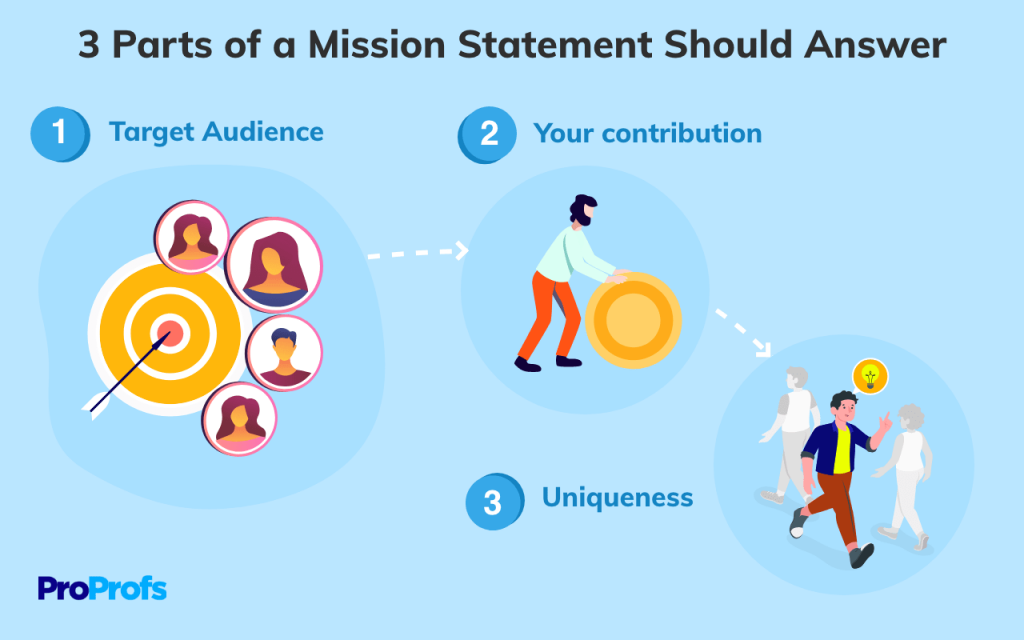A mission statement serves as a compass for organizations, guiding their actions, decisions, and objectives. It succinctly expresses an organization’s purpose, values, and goals. However, how long should a mission statement be, a common question arises: How long should it be?
Defining a Mission Statement
Before delving into its length, let’s clarify what a mission statement entails. A mission statement is a concise declaration that encapsulates an organization’s reason for existence, its values, and its primary objectives. It communicates the organization’s purpose to both internal stakeholders, such as employees, and external stakeholders, including customers, investors, and partners.
Importance of a Mission Statement
A well-crafted mission statement serves several crucial functions. It provides clarity and direction, aligning the efforts of employees towards common goals. Additionally, it fosters cohesion and unity within the organization by articulating shared values and objectives. Moreover, a compelling mission statement can enhance brand identity and attract stakeholders who resonate with its purpose.
Length of a Mission Statement
The ideal length of a mission statement is a subject of debate among professionals. While some advocate for brevity, others argue for more comprehensive statements. Ultimately, the length should prioritize clarity and effectiveness in communicating the organization’s purpose.
Factors Influencing Length
Several factors influence the appropriate length of a mission statement:
- Industry: Different industries may require varying degrees of detail and specificity in their mission statements.
- Organizational Complexity: The size and complexity of an organization can affect the length of its mission statement.
- Audience: Consideration of the audience’s preferences and expectations is crucial in determining length.
Optimal Length
While there is no one-size-fits-all answer, a general guideline is to keep a mission statement concise and focused. Ideally, it should be no longer than a few sentences or a short paragraph. A succinct statement ensures clarity and memorability, making it easier for stakeholders to understand and internalize.
Clarity and Conciseness
how long should a mission statement be is to communicate the organization’s purpose clearly and succinctly. Clarity ensures that stakeholders understand the organization’s direction and objectives, fostering alignment and commitment.
Communicating Purpose
A concise statement conveys the organization’s core purpose without unnecessary elaboration. It articulates why the organization exists, what it aims to achieve, and how it intends to do so. By distilling complex ideas into simple, understandable language, a clear mission resonates with stakeholders and inspires action.
Avoiding Ambiguity
Long-winded statements run the risk of becoming convoluted and ambiguous, diluting their impact and effectiveness. Ambiguity can lead to confusion among stakeholders, undermining the purpose of the statement. Therefore, clarity and conciseness are essential in crafting a mission statement that effectively communicates the organization’s values and objectives.
Audience Consideration
When determining the length of a statement, it’s essential to consider the audience it serves. Tailoring the statement to resonate with different stakeholders can enhance its relevance and impact.
Tailoring for Stakeholders
A statement should speak directly to its intended audience, addressing their concerns, values, and expectations. By tailoring the language and content to resonate with specific stakeholders, such as employees, customers, or investors, the statement becomes more meaningful and compelling.
Impact on Engagement
A well-crafted has the power to engage and inspire stakeholders, rallying them around a common purpose. By aligning the statement with the interests and aspirations of its audience, organizations can foster a sense of belonging and commitment among stakeholders.
Examples of Effective Mission
Several organizations have distinguished themselves with concise and impactful mission statements:
- Google: “To organize the world’s information and make it universally accessible and useful.”
- Tesla: “To accelerate the world’s transition to sustainable energy.”
- Amazon: “To be Earth’s most customer-centric company, where customers can find and discover anything they might want to buy online.”
These examples demonstrate how clarity, conciseness, and relevance are key components of effective mission statements.
Crafting Your Mission Statement
how long should a mission statement be requires careful consideration and iteration. Here are some tips for creating a succinct and impactful statement:
- Focus on Core Values: Identify the organization’s core values and purpose.
- Be Specific: Avoid vague language and strive for clarity and specificity.
- Keep it Short: Aim for brevity, condensing the statement into a few key sentences.
- Seek Feedback: Solicit input from stakeholders to ensure the statement resonates with its audience.
- Regular Review: Periodically review and revise the statement to ensure it remains relevant and aligned with the organization’s goals and values.
Conclusion
In conclusion, the length of a should prioritize clarity and effectiveness in communicating the organization’s purpose. While there is no universal length requirement, a concise and focused statement is generally more impactful than a lengthy one. By crafting a statement that is clear, concise, and tailored to its audience, organizations can articulate their purpose and inspire stakeholders to action.


